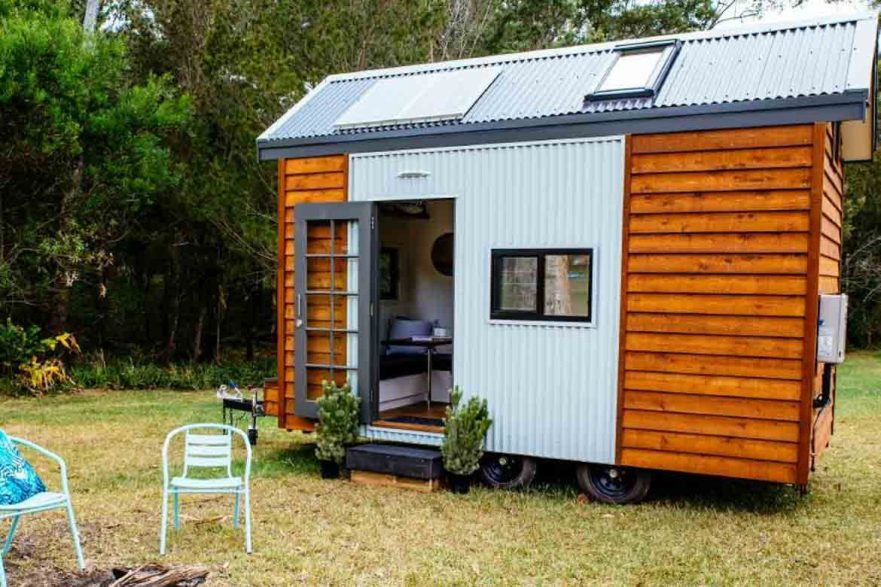
In the world of alternative housing, Tiny Homes have emerged as a game-changing option for those seeking simplicity, sustainability, and affordability. These compact dwellings are not just a trend—they’re a lifestyle shift. But the most common question for aspiring tiny house dwellers remains: How much does a tiny house cost?
The answer varies widely based on size, style, materials, and whether you choose to DIY or hire a professional builder. Let’s take a deep dive into the real costs of owning a tiny house and explore what goes into making one of these miniature dream homes a reality.
What is a Tiny House?
Before we break down the costs, it’s important to define what we mean by a “tiny house.” In general, Tiny Homes are residential structures typically ranging from 100 to 400 square feet. They can be built on wheels (THOWs – Tiny Homes on Wheels) or on a permanent foundation. Despite their small size, these homes often include all the essentials—living area, sleeping loft or bedroom, kitchen, and bathroom—strategically designed to maximize every inch.
Tiny homes appeal to a wide audience: minimalists, travelers, eco-conscious individuals, and those looking for financial freedom. But how affordable are they really?
Average Cost of a Tiny House
The cost of a tiny house can range anywhere from $20,000 to $150,000 or more, depending on how you approach the build. Here’s a breakdown of the three main categories:
1. DIY Tiny Homes: $20,000 – $50,000
For those with construction skills or a willingness to learn, building your own tiny house is the most budget-friendly option. Many people purchase used trailers or repurpose materials to save on costs. A basic DIY tiny home can cost as little as $20,000, while a more polished version with custom finishes might run closer to $50,000.
Key cost factors:
-
Trailer or foundation base
-
Lumber, insulation, roofing
-
Windows and doors
-
Plumbing and electrical
-
Appliances and fixtures
-
Tools (if not already owned)
Pros:
-
Lower total cost
-
Customization at every stage
-
Satisfaction from building it yourself
Cons:
-
Time-consuming (can take 6–12 months)
-
Requires tools, space, and skills
-
Risk of construction errors
2. Professionally Built Tiny Homes: $50,000 – $100,000+
If you’re not interested in wielding a hammer, professionally built Tiny Homes offer a stress-free option. These homes are often built to high standards with top-notch craftsmanship and come move-in ready.
Price range depends on:
-
Size and layout
-
Quality of materials
-
Interior finishes (e.g., granite countertops, high-end fixtures)
-
Smart home upgrades
Pros:
-
Turnkey solution
-
Higher build quality
-
Warranty and support (in most cases)
Cons:
-
More expensive
-
Less customization (unless ordering a custom build)
3. Tiny Homes on Wheels (THOWs): $30,000 – $90,000
Tiny homes built on trailers add flexibility and mobility. These structures must be road-legal, which means adhering to certain size and weight restrictions. THOWs often include off-grid capabilities like solar panels and composting toilets.
Additional costs for THOWs may include:
-
Upgraded trailer base
-
Road-worthy construction
-
Towing or delivery expenses
-
Off-grid systems (solar, propane, etc.)
Hidden Costs of Owning a Tiny House
While the upfront build cost is important, it’s not the whole story. Here are several hidden or ongoing expenses to factor in when budgeting for your tiny house lifestyle:
1. Land and Parking
Unless you’re going off-grid or living in a backyard, you’ll need a legal place to park or place your tiny home. This could involve purchasing land, renting a space in a tiny home community, or leasing a spot in an RV park.
Costs to consider:
-
Land purchase price (varies by location)
-
Zoning and permitting fees
-
Hookup costs for water, sewage, and electricity
2. Utility Setup
If your tiny home isn’t fully off-grid, you may need to connect to utilities—often a costly process, especially in rural areas. Off-grid setups (solar power, rainwater collection, propane) can also require upfront investment.
3. Insurance
Insuring a tiny house—especially one on wheels—can be tricky. Costs vary depending on whether it’s considered a home, an RV, or a mobile structure.
4. Maintenance and Repairs
Just like traditional homes, Tiny Homes require ongoing upkeep. While costs are generally lower due to the smaller size, repairs to custom or compact systems (like space-saving plumbing) can still add up.
Is a Tiny Home Worth the Cost?
For many people, the appeal of Tiny Homes goes beyond the price tag. It’s about simplifying life, reducing environmental impact, and escaping the burden of large mortgages and high utility bills. A well-built tiny home can last for decades with proper maintenance and can even appreciate in value in the right market.
Still, the lifestyle isn’t for everyone. The space constraints, zoning hurdles, and initial investment can be deal-breakers for some. It’s important to evaluate your personal goals, lifestyle preferences, and financial situation before making the leap.
Final Thoughts: So, How Much Does a Tiny House Cost?
There’s no one-size-fits-all answer, but here’s a general guide:
-
DIY Build: $20,000–$50,000
-
Professional Build: $50,000–$100,000+
-
Luxury or Custom Tiny Home: $100,000–$150,000+
Add to that the cost of land, utilities, and lifestyle adjustments, and you’ll get a full picture of what Tiny Homes truly cost.
Whether you’re building one to live in full-time, using it as a vacation home, or renting it out as an Airbnb, a tiny house can be a fulfilling and financially smart investment—if planned well.





